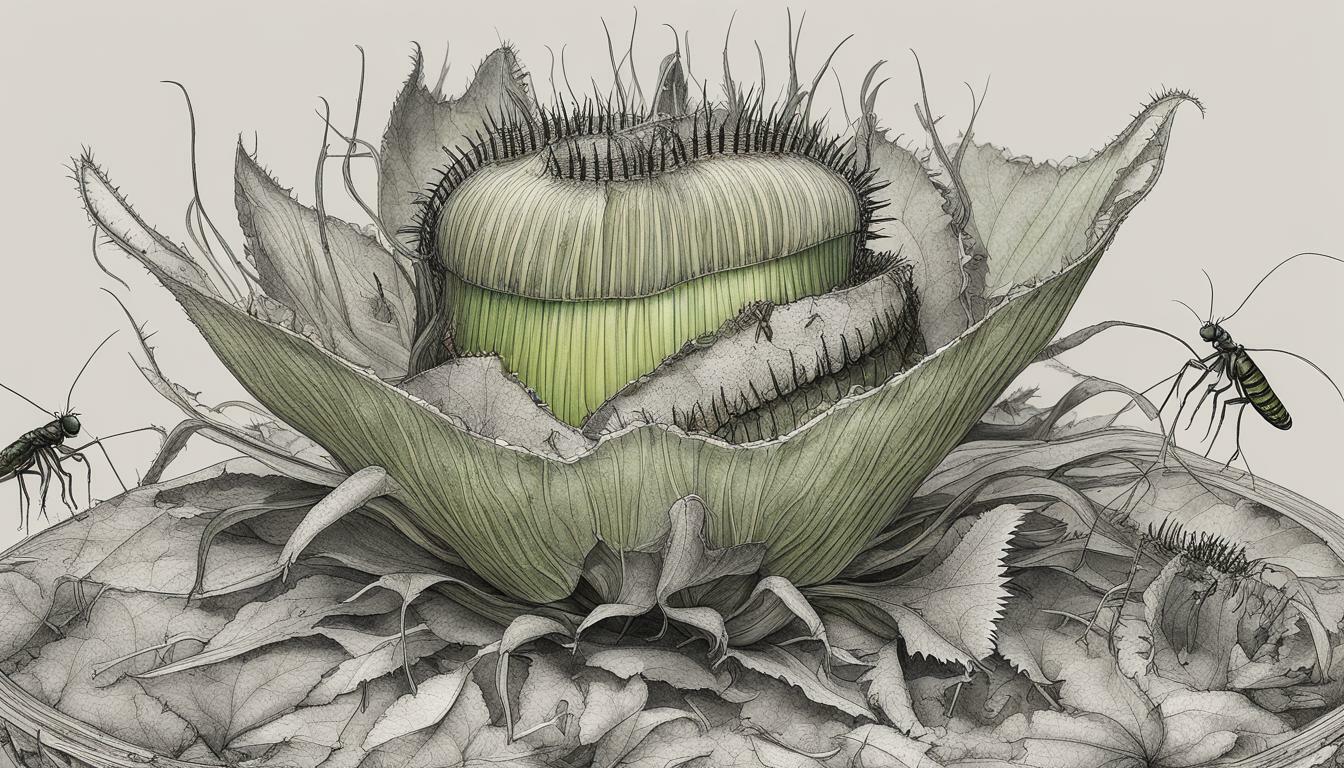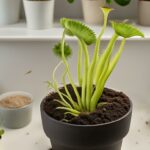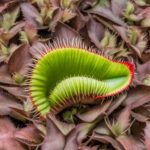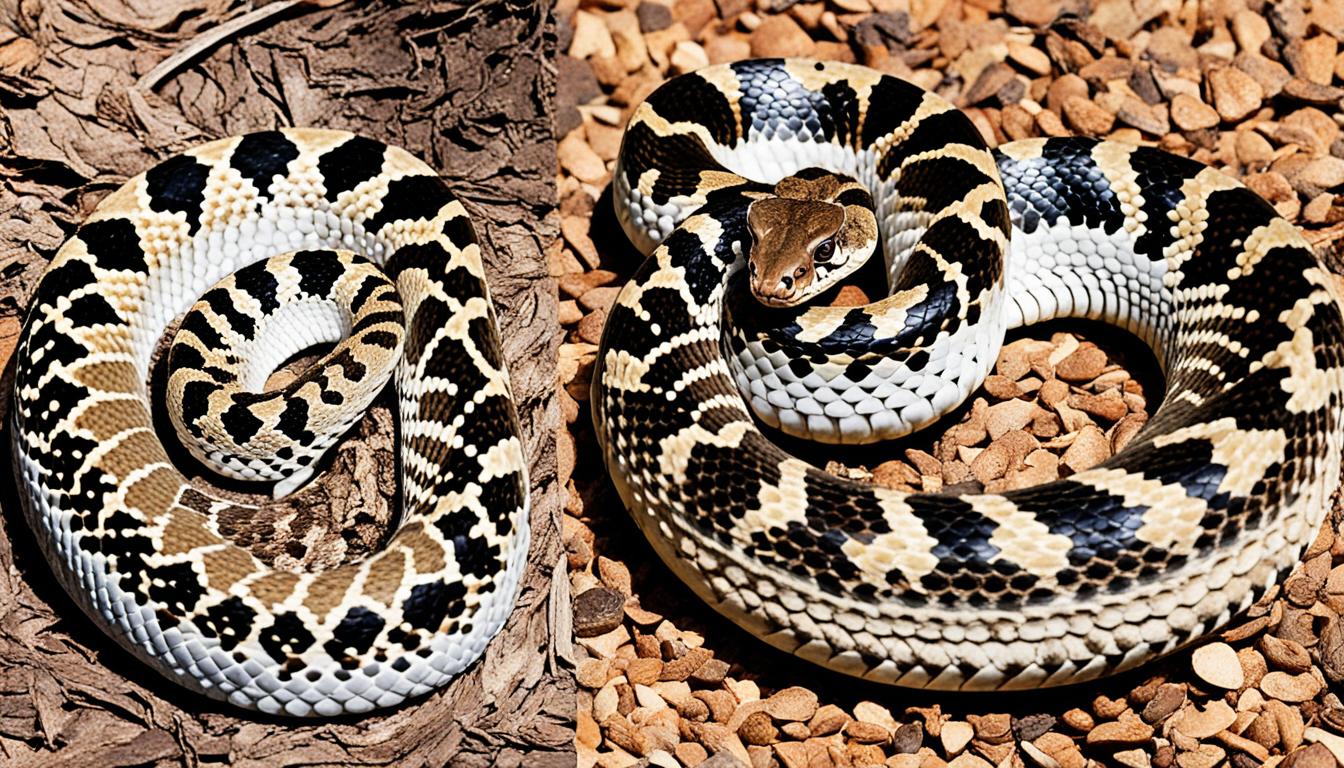If you have a Venus flytrap, you may have wondered if it can survive on a diet of dead bugs. Specifically, can it consume dead flies? It’s a reasonable question, and one that we’ll answer in this article. Understanding the dietary needs and behavior of Venus flytraps is essential to understand their feeding habits.
Key Takeaways:
- Venus flytraps are carnivorous plants that require a specific diet to thrive.
- Feeding Venus flytraps dead bugs, like dead flies, can be beneficial in certain situations.
- Plant health and insect quality are important factors to consider before offering dead bugs.
Venus Flytrap Diet
Knowing what to feed your Venus flytrap is essential for its survival. These carnivorous plants require a unique diet to thrive. In the wild, Venus flytraps mainly feed on insects such as flies, spiders, and ants. However, they can also consume other small arthropods, such as mites and beetles.
When it comes to feeding your Venus flytrap, you must provide live prey. They rely on the movement of their prey to trigger their traps. Once an insect lands on the leaves of the plant, the trigger hairs on the inner surface of the trap will sense the prey’s movement and cause the trap to close shut.
It is important to note that Venus flytraps do not require as much food as other carnivorous plants. Overfeeding them can lead to a weaker plant and could harm its overall health. In general, providing 1-2 prey items per month is sufficient.
Feeding your Venus flytrap can be tricky, especially if you are squeamish about handling live insects. If you are uncomfortable with this, consider purchasing pre-killed insects or even raising feeder insects, such as fruit flies or crickets, to ensure your plants receive a healthy diet.
Venus Flytrap Behavior
Understanding the behavior of Venus flytraps is crucial to determining their dietary needs. These unique plants have adapted to their environment by developing a specialized mechanism for trapping and digesting prey.
Venus flytraps feature modified leaves that are hinged and lined with small, sensitive trigger hairs. When an insect lands on the leaf and touches at least two of these hairs, the leaves snap shut, trapping the prey inside. The plant then secretes digestive enzymes to break down the insect and absorb its nutrients.
This behavior is not only efficient but also essential for the survival of Venus flytraps. In their natural habitat, they grow in nutrient-poor soil, making it challenging to obtain the necessary nutrients for growth and reproduction. By consuming insects, they can supplement their diet and thrive in these harsh conditions.
It’s important to note that Venus flytraps are only able to consume small prey such as insects, spiders, and other arthropods. They cannot consume larger prey like mice, birds, or other animals.
Furthermore, Venus flytraps require a period of rest after successfully catching and digesting prey. This period can last for several days, during which the leaves remain closed as the plant absorbs the nutrients from the insect. After this period, the leaves will reopen, and the plant will be ready to catch its next meal.
Overall, understanding the behavior of Venus flytraps is crucial to providing them with proper care and ensuring their health and well-being.
Can Venus Flytraps Consume Dead Bugs?
Now that we have explored the dietary needs and feeding habits of Venus flytraps, let’s answer the question on everyone’s mind: can these carnivorous plants consume dead bugs, specifically dead flies? The answer is yes, Venus flytraps can consume dead bugs, including dead flies.
However, it’s important to note that Venus flytraps primarily rely on live prey to receive the nutrients they need for optimal growth and health. While dead bugs can be a supplement to their diet, they should not be the sole source of food for your Venus flytrap.
If you’re considering feeding your Venus flytrap dead flies, there are a few factors to keep in mind. First, make sure the dead fly is relatively fresh. Venus flytraps have a limited time frame in which they can consume prey, so avoid feeding them bugs that have been dead for an extended period of time.
Second, consider the overall health of your Venus flytrap. If your plant is already stressed or weak, it may not be able to properly digest a dead fly. In this case, it’s best to stick to live prey or alternative dietary options.
Finally, if you do choose to feed your Venus flytrap dead flies, do so in moderation. Overfeeding can result in indigestion and other health issues for the plant.
Overall, while Venus flytraps can consume dead bugs, including dead flies, it’s important to remember that live prey should be their primary source of food. By providing a balanced and varied diet, as well as proper care and maintenance, you can support the natural behavior and growth of your Venus flytrap.
Factors to Consider
Feeding your Venus flytrap dead flies is just one aspect of caring for these carnivorous plants. To ensure their overall health and well-being, there are several factors you should consider:
Plant Health
Before feeding your Venus flytrap, make sure it is healthy and actively growing. If your plant is not in good condition, it may not be able to digest the insects properly, which could lead to further health issues. Monitor your plant’s growth and health regularly to determine if it is ready for feeding.
Insect Quality
The quality of the insects you feed your Venus flytrap is also important. Make sure the dead flies are not contaminated with pesticides or other chemicals, as this can harm your plant. It is best to feed your Venus flytrap insects that are specifically bred for feeding to carnivorous plants, which you can purchase online or from specialized nurseries.
Frequency of Feeding
Feeding your Venus flytrap too often or too little can have negative consequences. Overfeeding can cause your plant to become stressed and potentially die, while underfeeding can stunt its growth and prevent it from capturing enough nutrients. A good rule of thumb is to feed your Venus flytrap once a week, but adjust the frequency based on the plant’s growth and behavior.
By considering these factors, you can ensure that your Venus flytrap is receiving a suitable diet and maintaining its natural behavior. Regularly assessing your plant’s health and feeding it high-quality insects will help it thrive and grow as it should.
Alternatives to Dead Bugs
If feeding your Venus flytrap dead flies isn’t ideal, there are alternative dietary options that can provide the necessary nutrients without the drawbacks. These options include:
- Crickets: Live crickets are a popular alternative to dead flies, and they provide a good source of protein. However, they can be harder to come by and require more effort to maintain than simply feeding your plant dead flies.
- Mealworms: Another live insect alternative, mealworms are a great source of protein and are readily available at most pet stores. They are also easy to care for and can be stored in the refrigerator for extended periods.
- Bloodworms: These tiny aquatic worms offer a unique alternative to land-based insects. They are high in protein and can be purchased frozen from most pet stores.
It’s important to note that while live insects can provide more nutrition to Venus flytraps, they also require more effort and care. If you choose to use live insects, be sure to provide a suitable enclosure and adequate food and water.
Ultimately, the choice of feeding your Venus flytrap dead bugs or live insects is up to you. Choose the option that works best for your plant and fits your lifestyle and schedule.
Venus Flytrap Care Tips
To keep your Venus flytrap healthy and thriving, there are some essential care tips to follow:
- Light: Flytraps need at least four hours of direct sunlight per day, so make sure to place them in a sunny location, such as a south-facing window.
- Soil: Use a soil mix that is low in nutrients, such as a 50/50 mix of peat moss and perlite. Do not use regular potting soil or fertilizers, as they can harm the plant.
- Water: Keep the soil moist at all times, but do not let it become waterlogged. Always use distilled water or rainwater, as tap water contains minerals that can harm the plant.
- Humidity: Flytraps thrive in high humidity, so mist the plant daily or place a tray of water near it to increase humidity. Avoid putting the plant in a dry environment, such as near a heater or air conditioner.
- Feeding: While Venus flytraps can consume dead bugs, they also need live insects to thrive. Feed them live bugs, such as crickets or mealworms, once every 1-2 weeks. Do not feed them insects that are too large, as this can cause damage to the plant.
- Winter Dormancy: In the winter, Venus flytraps will go dormant and stop growing. During this time, reduce watering and place the plant in a cooler location, such as a garage or basement, where it can experience temperatures between 35-50°F.
By following these care tips, you can ensure that your Venus flytrap remains healthy and happy for years to come.
Conclusion
As we have learned, Venus flytraps can consume dead bugs, including dead flies. However, it’s essential to understand their dietary needs and behavior to ensure their overall health and well-being.
Feeding your Venus flytrap dead flies should be done with caution, and factors such as the plant’s health and the quality of the insects should be considered. Following proper care tips, such as providing adequate water and sunlight, is crucial for maintaining the plant’s health and supporting its natural behavior.
Venus Flytrap Behavior and Care
Remember, Venus flytraps are unique and require specialized care. Understanding their behavior and dietary needs is crucial for their care. Always provide them with a suitable environment and ensure they have adequate access to insects, either through feeding or capturing prey themselves.
By following proper care tips and providing a suitable diet, you can support the natural behavior of your Venus flytrap and enjoy watching them thrive.
Do Venus Flytraps Only Eat Live Insects, or Can They Consume Dead Bugs as Well?
The venus flytrap’s diet consists mainly of live insects, but it can consume dead bugs as well. These carnivorous plants are triggered by movement and close their trap tightly around their prey. While they prefer live insects for the nutrients they provide, Venus flytraps can break down and absorb nutrients from dead bugs if no live prey is available.
FAQ
Q: Can Venus Flytraps Have Dead Bugs? Like Dead Flies.
A: Yes, Venus flytraps can consume dead bugs, including dead flies. However, there are important factors to consider when feeding them dead insects.
Q: What is the Venus Flytrap Diet?
A: Venus flytraps primarily feed on small insects, such as flies and ants. They obtain nutrients from the proteins found in these prey.
Q: What is Venus Flytrap Behavior?
A: Venus flytraps have unique behavior characterized by their ability to trap and digest prey. They have specialized leaves with sensitive trigger hairs that sense the movement of insects, causing the traps to close.
Q: Can Venus Flytraps Consume Dead Bugs?
A: Yes, Venus flytraps can consume dead bugs. However, it is important to consider the health of the plant and the quality of the insects being fed.
Q: What Factors Should I Consider When Feeding Venus Flytraps Dead Bugs?
A: Factors to consider include the overall health of the plant, the quality and freshness of the dead insects, and the frequency of feeding. These factors can impact the success of feeding dead bugs to Venus flytraps.
Q: Are There Alternatives to Feeding Dead Bugs to Venus Flytraps?
A: Yes, if feeding dead bugs isn’t ideal, there are alternative dietary options available for Venus flytraps. These alternatives can provide the necessary nutrients for their growth and development.
Q: What Are Some Venus Flytrap Care Tips?
A: To ensure the health and well-being of your Venus flytrap, it is important to provide proper care. This includes maintaining appropriate lighting and humidity levels, using distilled water, and avoiding overfeeding.
Q: Can Venus Flytraps Consume Dead Flies?
A: Yes, Venus flytraps can consume dead flies. However, it is important to consider the overall health of the plant and the quality of the flies being fed.











